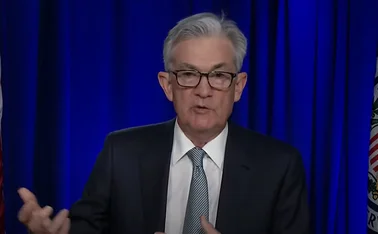
Finding room for ESG

The Panel
- Rianne Luijendijk, Economist, Netherlands Bank (DNB)
- Isabela Maia, Head of Corporate Risks and Benchmarks, Central Bank of Brazil
- Tarlan Rasulov, Director of Foreign Exchange Reserve Management, Central Bank of the Republic of Azerbaijan
- Albina Soultanaeva, Deputy Head of Markets, Sveriges Riksbank
How would you describe your institution’s approach to ESG principles?
Rianne Luijendijk, Netherlands Bank (DNB): We see ESG integration a little differently than other institutions – it is an umbrella term under which you can implement a number of strategies. For instance, we require our external managers to look at all financial indicators, but also to assess material ESG indicators and incorporate them in their advice.
Across the institution, the DNB has drafted a five-year corporate social responsibility strategy, in which we have identified key ESG priorities. These six priorities are reassessed each year and then approved by the board, which says which priorities deserve what resource and within what division. The integration of sustainability risks and ESG principles within our reserve management is one core priority, and we have taken many steps over the past few years, including signing up to the Principles for responsible investing, integrating ESG into all of our investments, employing voting and engagement, and promoting responsible investing.
But, in terms of reserve management and ESG, we distinguish between the two portfolio types: internally and externally managed. Internally, the majority of our assets are issued by supranational sovereigns and agencies, and these holdings change less often. For these portfolios we have integrated ESG as part of the issuer analysis process where we assess the MSCI ESG ratings of holdings. We then have an internal discussion on whether or not we think the holdings are in line with our responsible investment policy. We then decide whether or not to sell out of the position for ESG reasons.
Externally, seven managers invest in corporate holdings, which are equity, high yield and investment-grade bonds. We are subject to these managers own methodology, but we select them on the basis of the frameworks they have. So, during the selection process, we take ESG considerations into account and challenge them on their approach to ESG within their day-to-day operations.
Albina Soultanaeva, Sveriges Riksbank: The Riksbank uses the UN’s 2030 Agenda and its Sustainable Development Goals as a broad starting point. Our work is focused on strengthening sustainability considerations in our own internal operations, as well as on adjusting the policy work to reflect the transition to more sustainable development.
For its policy work, the Riksbank focuses on the analysis of how climate change and sustainability concerns can affect the economy as a whole, and potential threats to price stability and financial stability.
This is key to understanding how the Riksbank must adapt to coming changes and, within our mandate, contribute to mitigating climate change. One of the policy actions has been to incorporate sustainability perspectives into our corporate bond-purchasing programme by applying norm-based negative screening. This means that, from January 2021, we screen companies in our eligible universe for compliance with certain international norms and standards for sustainability. We have also published the carbon footprint of the corporate bond portfolio.
The Riksbank also incorporates sustainability in the management of its foreign exchange reserves. This is done without sacrificing the ability to achieve the primary objectives with the FX reserves, including providing liquidity assistance to the financial system if or when needed. We aim to incorporate climate-related risks and to reduce the carbon footprint of the FX reserves. Therefore, certain holdings with high emissions of greenhouse gases have been sold to bring down the carbon footprint. We have, for example, adjusted our holdings in Canadian provinces and Australian states.
We also apply negative screening. This means we evaluate ESG factors before deciding whether to accept new investments in the FX reserves.
Tarlan Rasulov, Central Bank of the Republic of Azerbaijan (CBA): The CBA acknowledges the importance of abiding by ESG principles and is committed to promoting ESG-related investments as long as this does not conflict with its core reserve management objectives: capital preservation, liquidity and profitability.
The CBA has allocated the main proportion of its reserves to investment opportunities, which are highly liquid and mostly short-term fixed income securities issued by supranational organisations, agencies and sovereign governments. In addition, short-term credit securities have also been added to the portfolio to obtain additional returns over supra-, agency- and government-issued securities. In other words, a balance between the key objectives of reserve management has been the determining factor for investments in CBA’s portfolio.
Despite the drawbacks presented by the relatively small portfolio size and the need for a high liquidity level, we have gradually explored opportunities to venture into green investments. We expressed this commitment through an investment in a green fund managed externally and invested in green bonds internally when these bonds offered an attractive risk-return balance.
Isabela Maia, Central Bank of Brazil: Our mission is to ensure the stability of the currency’s purchasing power, to foster a sound, efficient and competitive financial system, and to promote the economic well-being of society. Within this mandate, we are committed to gradually include ESG principles and variables in all of our decision-making processes, regardless of their complexity.
Socio-environmental responsibility is among the central bank’s values, and sustainability is one of our strategic objectives for 2020–23 – alongside inclusion, transparency, competitiveness and education. On the sustainability front specifically, the central bank is dedicated to promoting sustainable finances and contributing to the reduction of socio-environmental and climate-related risks within Brazil’s economy and broader financial system. Aligned to this commitment, the first edition of our report on Social, environmental and climate-related risks and opportunities was recently launched, as well as new regulation targeting financial institutions.
What is your institution’s view on ESG screens? Are they actively used within your portfolios?
Rianne Luijendijk: We have a minimum set of screens that we require from all our managers, which is that they exclude all controversial weapons as outlined in Dutch law and that they screen for global compact violations. With the latter, it is not mandatory that they exclude names flagged, but we do want them to show they have screened and to follow up in the cases where they choose not to exclude a person or entity. Beyond those two screens, the majority of our managers apply additional screens. It is not something we require, but we do support it. In the future, we will be working to expand our set of screens because we want to ensure our equity portfolios are in line with the 2015 Paris Agreement on climate change. Under this broader set of screens, we would have limits on thermal coal extraction, fossil fuels and tobacco.
Albina Soultanaeva: The Riksbank applies norm-based negative screening in its corporate bond purchasing programme with the aim of reducing tail risks related to sustainability. This screening allows us to manage public finances prudently and contributes to management based on the Swedish state’s core values. We also use ESG screening when considering expanding the FX reserves universe to additional issuers.
Tarlan Rasulov: Public information on issuers is analysed to consider the suitability of investing in a particular asset. This analysis does not only cover the financial attractiveness of the investment, but also incorporates non-financial information, such as a history of how the company has performed with regard to its relationship with the public, possible environmental concerns of the performance of the firm (or potential contribution of the company’s activities to social causes in a positive way) and so on. We generally use Bloomberg’s ESG function.
Isabela Maia: The ESG approach to portfolio management is aligned with our legal mandate and is constrained to the main pillars of safety, liquidity and profitability of the central bank’s investment strategy. The international reserves portfolio is invested in typical asset classes used by central banks: sovereign bonds, agencies and supranational bonds, time deposits, and so on, and we are gradually integrating ESG metrics aimed at monitoring the portfolio’s ESG risks.
What has been the impact of ESG screens on your portfolios?
Rianne Luijendijk: The DNB is currently invested in pooled funds, but we are in the process of transferring to mandates, which means we will have a greater degree of freedom to set our own restrictions and requirements. As a result, we have had to expand our exclusion list to financial institutions that are supervised within the eurosystem; I think excluding financial institutions will have a larger impact than ESG-related screens. We performed an analysis, and ESG screens only impacted 10% of our investment universe – which can easily be managed.
Tarlan Rasulov: ESG screens have not been actively used in our portfolio, but a generic analysis of the non-financial aspects and implications of the performance of issuers has enabled the CBA to invest in more responsible names, which is a boost for the reputation of the institution and poses a lower amount of risk to us.
Isabela Maia: As investments in private issuers are very small or implemented through derivatives, ESG screens are not expected to have a relevant impact on FX reserves investments. Metrics of ESG risks, such as weighted average carbon intensity, are used to monitor the ESG profile of the portfolio.
Albina Soultanaeva: So far, no firm has been excluded from the corporate bond-purchasing programme based on the norm-based screening. As I mentioned, we have made some adjustments in the FX reserves, taking the greenhouse gas intensity into account.
Do you agree that central bank mandates currently restrict further integration of ESG principles both domestically and internationally?
Rianne Luijendijk: We have had this discussion a few times internally and it really depends on a range of things. The first is whether the tone at the top is supportive. If your board of directors is supportive of adjusting the formulation within your mandate to ensure you have room to incorporate ESG, then it is not a problem – and this has been the case at the DNB. Our mandate now states that we strive for sustainable economic growth and price stability so it is very explicit. This changed three years ago and gave us a lot of room to further expand our portfolios. It is also important to make a distinction between monetary and non-monetary activities.
At the DNB, there is more freedom to decide where we want to invest with regard to non-monetary activities. The integration of ESG in monetary portfolios may be more difficult because the central aim of the holdings is to make sure that we get close to 2% inflation. But, as the saying goes: ‘if there is a will, there is a way’. As long as there is some desire to approach the integration of ESG step by step, then progress will be made.
Albina Soultanaeva: As we state in our sustainability strategy, the Swedish parliament and government have the main responsibility for conducting climate policy. The Riksbank can contribute within its mandate and as a complement to other policies.
Central banks have to manage the risks on their balance sheets carefully. Incorporating sustainability and minimising their own exposures to climate risk is a prudent way for central banks to manage the risks from their own investments. At the same time, in monetary policy operations, there are a number of legal principles central banks need to consider. For example, for the Riksbank it is important that screening does not have a disproportionately negative effect on the ability to achieve the objective behind the monetary policy operation.
For our FX reserves, it is fair to say that we can incorporate sustainability within the legal mandate as long as it does not negatively affect the ability to execute on our primary responsibilities.
Tarlan Rasulov: We agree that it is impractical to a considerable extent for central banks to integrate ESG principles into their portfolios. The central bank’s objectives mentioned previously – such as liquidity, capital preservation and profitability – have put pressure on the ability of central banks to invest on the basis of ESG principles. Doing so in a greater capacity might lead to the inability of central banks to carry out their missions effectively. Therefore, securities that are compatible with ESG principles are first analysed if they meet other main criteria, meaning that the mandate of central banks has been a constraint for them in this regard.
Isabela Maia: A central bank’s legal mandate and the three investment pillars do not prevent it from integrating ESG principles within their risk management framework. The Central Bank of Brazil’s ESG approach, based on the Task Force on Climate-related Financial Disclosure (TCFD) guidelines, is disclosed in the third chapter of our report.
What is your central bank’s approach to ensuring firms your institution invests in adheres to ESG principles?
Rianne Luijendijk: In general, this is a call made by the external managers who have their own policies and adherence approaches to ESG. We do test their policies in terms of alignment to our own, and we discuss regularly why they move out of certain positions and whether it is related to ESG adherence. But, when we move to a mandate structure, we will have to become more vocal about firms having to adhere to certain ESG principles because the voting and engagement will be done in our name instead of that of the manager.
Albina Soultanaeva: Our view is that better reporting on climate-related information is essential to make informed decisions, for policy-makers as well as non-financial and financial firms. We welcome the global standard for sustainability reporting that is now taking shape under the auspices of the International Financial Reporting Standards Foundation, and see the need for companies to start reporting in line with the recommendations by the TCFD.
We aim to promote transparency concerning climate-related information in both international forums and our internal work. For example, we have taken a first step towards reporting climate-related information on our own balance sheet by publishing the carbon footprint of our corporate bond portfolio.
Tarlan Rasulov: CBA traders conduct a general analysis before investing to ensure issuers are not engaged in practices contrary to sound ESG principles. Hence, public information on issuers available to the CBA is taken into consideration on ESG compliance of issuers to choose responsible companies. However, as previously mentioned, ESG compliance does not guarantee that the CBA will invest in the security as it has to meet other criteria such as liquidity and profitability.
Isabela Maia: Our central bank is gradually introducing ESG criteria on counterpart selection process without jeopardising the three pillars of its investment strategy. In this process, ESG scores have been considered in the analysis.
This is a summary of a forum convened by Central Banking. The commentary and responses to this forum are personal and do not necessarily reflect the views and opinions of the panellists’ respective organisations.
This feature forms part of the Central Banking focus report, ESG for central banking 2021
Only users who have a paid subscription or are part of a corporate subscription are able to print or copy content.
To access these options, along with all other subscription benefits, please contact info@centralbanking.com or view our subscription options here: subscriptions.centralbanking.com/subscribe
You are currently unable to print this content. Please contact info@centralbanking.com to find out more.
You are currently unable to copy this content. Please contact info@centralbanking.com to find out more.
Copyright Infopro Digital Limited. All rights reserved.
As outlined in our terms and conditions, https://www.infopro-digital.com/terms-and-conditions/subscriptions/ (point 2.4), printing is limited to a single copy.
If you would like to purchase additional rights please email info@centralbanking.com test test test
Copyright Infopro Digital Limited. All rights reserved.
You may share this content using our article tools. As outlined in our terms and conditions, https://www.infopro-digital.com/terms-and-conditions/subscriptions/ (clause 2.4), an Authorised User may only make one copy of the materials for their own personal use. You must also comply with the restrictions in clause 2.5.
If you would like to purchase additional rights please email info@centralbanking.com test test test







